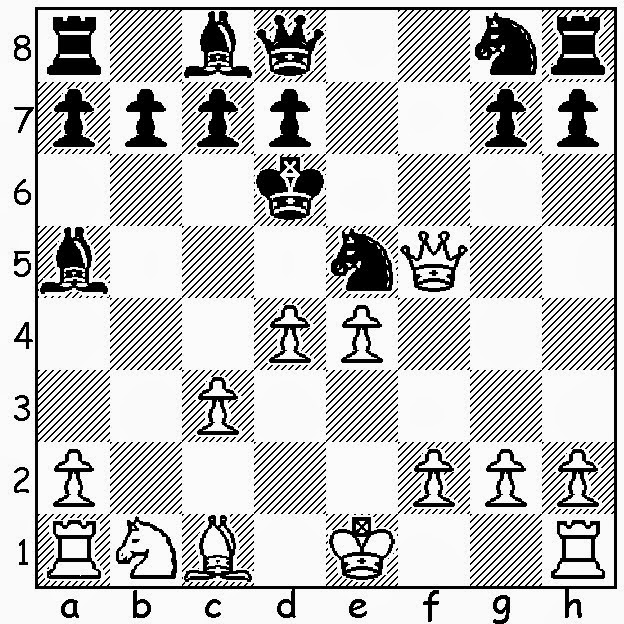Here we have another wild attack, and in a 3-minute game it can be a race as to what will finish off the Black King - enemy pieces or the clock.
Philidor 1792 - guest221
3 0 blitz, www.bereg.ru, 2013
1.e4 e5 2.Nf3 Nc6 3.Bc4 Bc5 4.b4
4...Bxb4 5.c3 Ba5 6.Bxf7+
The Evans Jerome Gambit.
6...Kxf7 7.Nxe5+ Nxe5 8.Qh5+ Ke6 9.Qf5+ Kd6 10.d4
10...Qe8 11.dxe5+ Kc6 12.e6 Kb6
Protecting the bishop and varying from 12...Qxe6 of Philidor 1792 - guest2001, 3 0 blitz, www.bereg.ru, 2013, (1-0, 26).
13.Na3 d5 14.Rb1+ Ka6 15.exd5
It looks like Black lost on time. He had 15...Qg6 as a defensive move, although after 16.Qf3 b6 (to castle-by-hand) 17.0-0 White would be better.














































